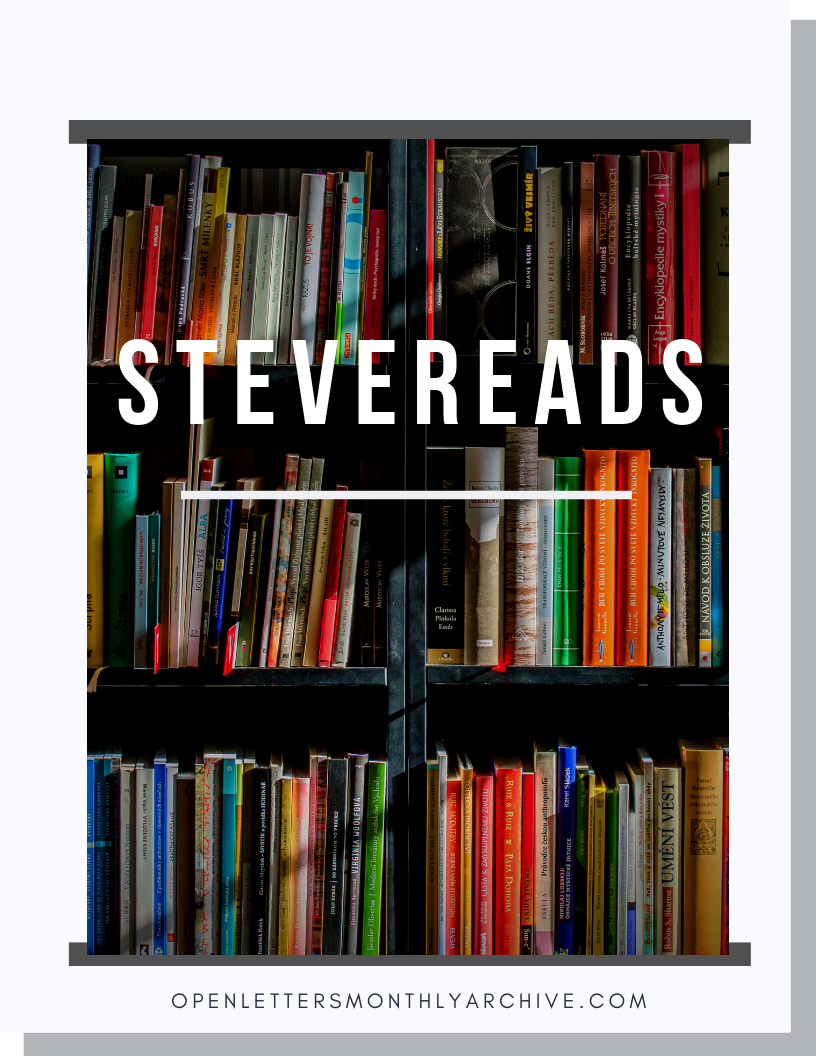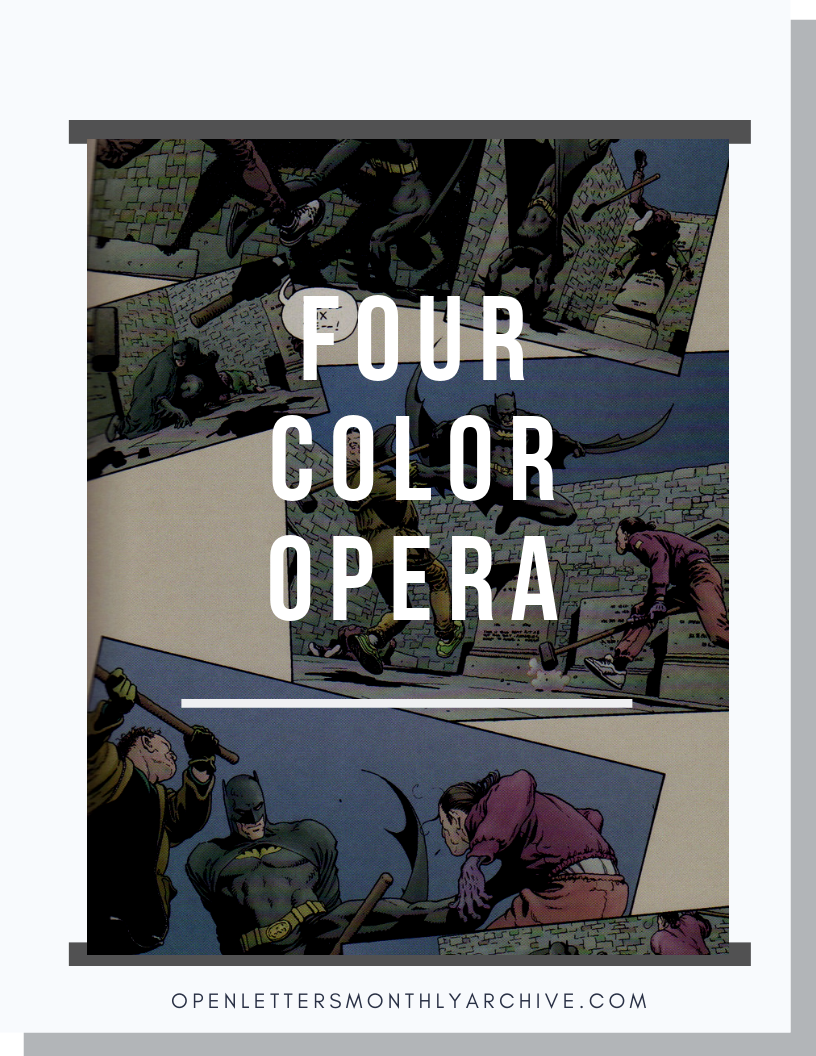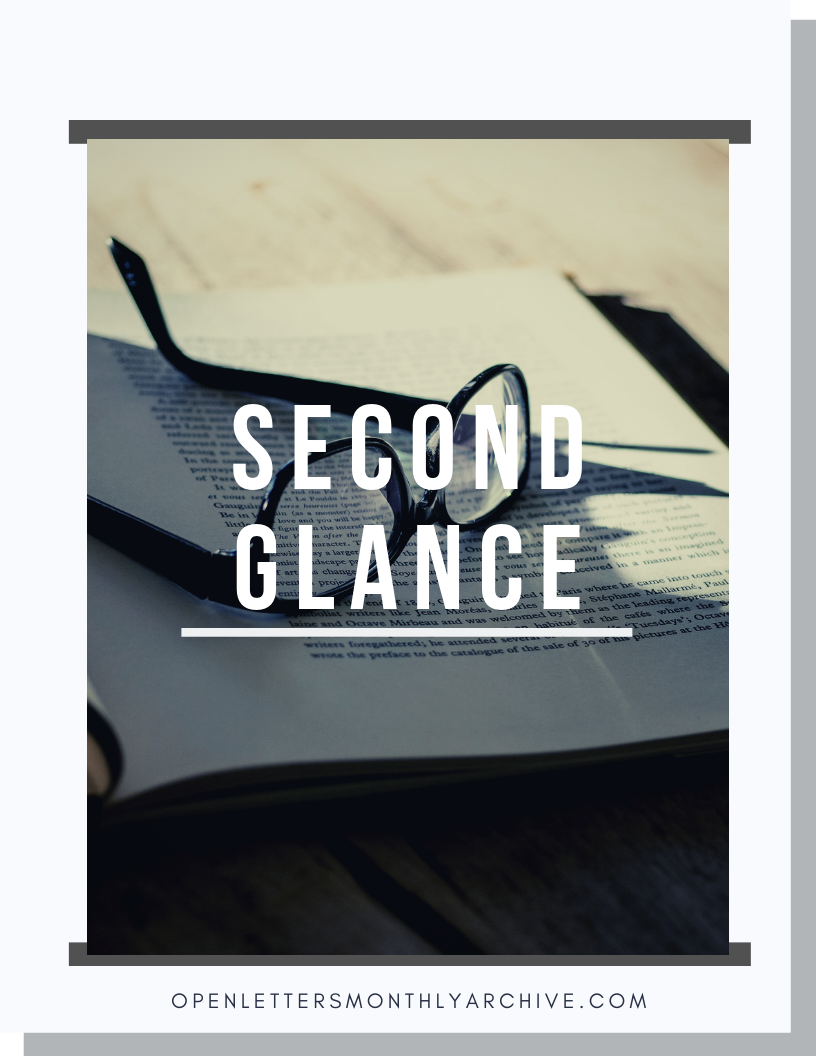Our Year in Reading 2016 Continues
/
 The reprints are the first collection of DC's Wonder Woman by novelist Greg Rucka, from 2002. His version of Princess Diana of the Amazons is more progressive than any other in recent memory. Here, Rucka and artist Drew Johnson explore the fallout when Wonder Woman—whose physical prowess improves the world daily—publishes a book of essays. Those who can't destroy her with fists try very hard to do so on the battlefield of public relations.The volume has plenty of humor, like when the publisher offers their mock-up of the book's cover. Diana is scantily-clad on a pink sofa, staring at readers over her bare shoulder. Her team of lawyers and reps—and she does need one, as Themysciran ambassador—instead offer a tasteful cover featuring her golden lariat on a white background.Less funny is when a group called “Protect the Children” goes after Diana for promoting literacy, environmental awareness, and gay rights. Like the Koch brothers funding the Tea Party, a pharmaceutical baroness named Veronica Cale stands behind the protests. Super-villains like Dr. Psycho, Ares, and Silver Swan do appear, but Cale remains the most fascinating. “I am the American success story,” she says, after revealing her nightmarish past. “I am rags-to-riches, I am everything the Wonder Woman pretends to be. And the difference is that I earned all of it... I made myself who I am. If there is a Wonder Woman in this world, and I stress if...it's me.”Also included is this volume is the original graphic novel The Hiketeia, drawn meticulously by J.G. Jones (who painted the book's cover). Though light on action, this melancholy story takes places mostly at night and features warm coloring by Dave Stewart. Batman shows up, too.
The reprints are the first collection of DC's Wonder Woman by novelist Greg Rucka, from 2002. His version of Princess Diana of the Amazons is more progressive than any other in recent memory. Here, Rucka and artist Drew Johnson explore the fallout when Wonder Woman—whose physical prowess improves the world daily—publishes a book of essays. Those who can't destroy her with fists try very hard to do so on the battlefield of public relations.The volume has plenty of humor, like when the publisher offers their mock-up of the book's cover. Diana is scantily-clad on a pink sofa, staring at readers over her bare shoulder. Her team of lawyers and reps—and she does need one, as Themysciran ambassador—instead offer a tasteful cover featuring her golden lariat on a white background.Less funny is when a group called “Protect the Children” goes after Diana for promoting literacy, environmental awareness, and gay rights. Like the Koch brothers funding the Tea Party, a pharmaceutical baroness named Veronica Cale stands behind the protests. Super-villains like Dr. Psycho, Ares, and Silver Swan do appear, but Cale remains the most fascinating. “I am the American success story,” she says, after revealing her nightmarish past. “I am rags-to-riches, I am everything the Wonder Woman pretends to be. And the difference is that I earned all of it... I made myself who I am. If there is a Wonder Woman in this world, and I stress if...it's me.”Also included is this volume is the original graphic novel The Hiketeia, drawn meticulously by J.G. Jones (who painted the book's cover). Though light on action, this melancholy story takes places mostly at night and features warm coloring by Dave Stewart. Batman shows up, too. The new comic that I loved was Faith: Hollywood and Vine, by the publisher Valiant. In this shared fictional universe, powered people are “psiots,” and Faith Herbert is the hero Zephyr, who can fly, protect others in a telekinetic field, and has a backstory involving the break-up of her superhero team, the Renegades. She's since moved out to Los Angeles, where she goes by the name Summer Smith and cranks out listicles for the website Zipline.Writer Jody Houser folds everything relevant from Faith's past into her current struggle as a twenty-something “content producer,” including her assignment to binge-watch and review the reality show Something to Torque About, starring her psiot ex, Torque (hey, that's almost as cringe-inducing as actual reality). As Zephyr, she begins investigating the disappearance of a teen named Sam Bradshaw, who's a fan of Faith's favorite TV show, Night Shifters.Fandom, it turns out, is one of the key pleasures in reading this comic. Houser crams the dialogue and narration boxes with words like “frak” and “frell” (from Battlestar Galactica and Farscape, respectively), to the delight of nerds everywhere. Faith also self-deprecates with Peter Parker-like tenacity when she clobbers an attacker with an office cabinet and thinks, “That's one down. Or should I say filed? ...no, I shouldn't.” The mystery proceeds, and comes to surround a man called the Director and his Scientology-inspired murder cult.The art is split between Faith's daydreams and her reality. Her daydreams, drawn by Marguerite Sauvage, are loose, pastel-colored, and have a fairytale quality. The main story panels by Francis Portela are much grittier, with razor-lined expressiveness in everyone's faces and bodies. Speaking of bodies, Faith is a plus-sized woman. This isn't addressed in the story--it’s respected as a normal aspect of her life. The same way that size should have no bearing on how we treat someone, it doesn’t stop someone from saving the world.Zach Rabiroff, EditorFor me, at least, 2016 was the year that fiction failed. Make-believe stories, at their best, are supposed to show us a heightened version of our own reality: visions that illuminate the truth by bending and magnifying it. But how could any amount of creative truth-bending compare to the brutal, dispiriting reality of these past twelve months? Could the darkest political satire imagine as venal and infantile a demagogue as our president-to-be, whose thin-skinned insecurity is surpassed only by his evident disdain for supporters and critics alike? Could the grimmest sci-fi dystopia match the casual relief with which Americans have given up their equality, their freedom, and their faith in fair elections? Novels, alas, have a long way to go before they can catch up with Donald J. Trump.
The new comic that I loved was Faith: Hollywood and Vine, by the publisher Valiant. In this shared fictional universe, powered people are “psiots,” and Faith Herbert is the hero Zephyr, who can fly, protect others in a telekinetic field, and has a backstory involving the break-up of her superhero team, the Renegades. She's since moved out to Los Angeles, where she goes by the name Summer Smith and cranks out listicles for the website Zipline.Writer Jody Houser folds everything relevant from Faith's past into her current struggle as a twenty-something “content producer,” including her assignment to binge-watch and review the reality show Something to Torque About, starring her psiot ex, Torque (hey, that's almost as cringe-inducing as actual reality). As Zephyr, she begins investigating the disappearance of a teen named Sam Bradshaw, who's a fan of Faith's favorite TV show, Night Shifters.Fandom, it turns out, is one of the key pleasures in reading this comic. Houser crams the dialogue and narration boxes with words like “frak” and “frell” (from Battlestar Galactica and Farscape, respectively), to the delight of nerds everywhere. Faith also self-deprecates with Peter Parker-like tenacity when she clobbers an attacker with an office cabinet and thinks, “That's one down. Or should I say filed? ...no, I shouldn't.” The mystery proceeds, and comes to surround a man called the Director and his Scientology-inspired murder cult.The art is split between Faith's daydreams and her reality. Her daydreams, drawn by Marguerite Sauvage, are loose, pastel-colored, and have a fairytale quality. The main story panels by Francis Portela are much grittier, with razor-lined expressiveness in everyone's faces and bodies. Speaking of bodies, Faith is a plus-sized woman. This isn't addressed in the story--it’s respected as a normal aspect of her life. The same way that size should have no bearing on how we treat someone, it doesn’t stop someone from saving the world.Zach Rabiroff, EditorFor me, at least, 2016 was the year that fiction failed. Make-believe stories, at their best, are supposed to show us a heightened version of our own reality: visions that illuminate the truth by bending and magnifying it. But how could any amount of creative truth-bending compare to the brutal, dispiriting reality of these past twelve months? Could the darkest political satire imagine as venal and infantile a demagogue as our president-to-be, whose thin-skinned insecurity is surpassed only by his evident disdain for supporters and critics alike? Could the grimmest sci-fi dystopia match the casual relief with which Americans have given up their equality, their freedom, and their faith in fair elections? Novels, alas, have a long way to go before they can catch up with Donald J. Trump. No, this past year (and especially during the weeks that followed the national self-mutilation of November 8) I found myself turning to a field of literature that previously had left me baffled and cold: the world of 20th century poetry. More specifically, what the writer and scholar Carolyn Forche has termed “poetry of witness”: the work of poets reflecting on eras of historical turmoil, whose words very suddenly took on a significance I hadn’t anticipated.Take, for instance, the odious and tedious playwright Bertolt Brecht (a man so dedicated in his Stalinism that he fled behind the Iron Curtain). Yet here he is, in his poem “To Those Born Later,” speaking for every chastened American alive today (translation by John Willett, Ralph Manheim, and Erich Fried):
No, this past year (and especially during the weeks that followed the national self-mutilation of November 8) I found myself turning to a field of literature that previously had left me baffled and cold: the world of 20th century poetry. More specifically, what the writer and scholar Carolyn Forche has termed “poetry of witness”: the work of poets reflecting on eras of historical turmoil, whose words very suddenly took on a significance I hadn’t anticipated.Take, for instance, the odious and tedious playwright Bertolt Brecht (a man so dedicated in his Stalinism that he fled behind the Iron Curtain). Yet here he is, in his poem “To Those Born Later,” speaking for every chastened American alive today (translation by John Willett, Ralph Manheim, and Erich Fried):
Our forces were slight. Our goalLay far in the distanceIt was clearly visible, though I myselfWas unlikely to reach it.So passed my timeWhich had been given to me on earth.You who will emerge from the floodIn which we have gone underRememberWhen you speak of our failingsThe dark time tooWhich you have escaped.
Likewise the Turkish poet Nazim Hikmet, who spent much of his life in and out of prison cells before dying an exile from the country he never stopped loving. His poem “On Living,” (here translated by Randy Blasing and Mutlu Konuk) manages, despite its overarching fatalism, to leave the reader with a lingering, ineffable sense of hope:
This earth will grow cold,a star among stars and one of the smallest,a gilded mote on blue velvet— I mean this, our great earth.This earth will grow cold one day,not like a block of iceor a dead cloud even but like an empty walnut it will roll along in pitch-black space . . .You must grieve for this right now—you have to feel this sorrow now—for the world must be loved this much if you’re going to say “I lived”. . .
That old war-horse W.H. Auden and his poem “September 1, 1939” have a tendency to get trotted out whenever a moment of national or international crisis occurs. Yet it seems somehow fitting to close out the year with lines that have proved more timeless than their author might have hoped:
Defenceless under the nightOur world in stupor lies;Yet, dotted everywhere,Ironic points of lightFlash out wherever the JustExchange their messages:May I, composed like themOf Eros and of dust,Beleaguered by the sameNegation and despair,Show an affirming flame.
We’ll need to keep an eye out for those points of light in 2017. The night looks to be very dark indeed.Laura Tanenbaum, Contributor




I see them everywhere my two mad treasures. An elegant man in a hat, with an able, stocky woman at his side. A solitary black-haired boy with a peculiar stride. I am looking on benches and streets, in logic and code. I am looking in the form of truths stripped to the bone.

Ankles sunk deep in the foul-smelling sludge, he and Brunner are slinging heaped shovelfuls of muck into the Zerstor’s funnel without a break. The Thing gobbles up all the mess, emitting a series of gross, squelchy slurps. Every ten seconds, its arse lays a new book which flies up towards the ceiling, its pages fluttering. Already, hundreds of books are swirling around the warehouse in an ominous swarm above the men’s heads, making a deafening racket.
Guylain hates his work, he hates the machine and he hates his foul-mouthed, abusive boss, but when he finds the diary of Julie, a public lavatory attendant, his life takes an unexpected turn.Levi Stahl, Contributor
Rainy days turn people in upon themselves--hat pressed down, chin tucked in--but there are common rhythms in the dodging and splashing and weariness. in the park on the first warm day of the year people of all kinds will be drawn into cheerful fellowship. When a bad day suddenly clears to late sun the thoughts of individuals all over a city, intent on thousands of different tasks, will take a momentary united leap.
Having hooked us, Harris holds our interest, probing, intellectual, and companionable all at the same time. I suspect the book spoke to me in particular this year because I spent a lot of time reading and thinking about UK nature writing--which is in the midst of a boom whose quality more than matches its sales or hype--and our own more attenuated American tradition. Also, more simply, I got a dog and spent more time walking and hiking this summer and fall than ever before; always mentally and emotionally susceptible to the weather, seasons, and their changes, I found myself this year with more occasion to attend. Of my beloved Robert Burton, author of The Anatomy of Melancholy, Harris writes, "The aim was not so much to understand the world but to find prolonged distraction from it." In this year in which distraction has been the most welcome of guests, Weatherland, offers us the chance for both. Like all the best reading.____Our Year in Reading Begins






